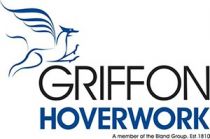Pusan National University Researchers Develop Breakthrough Deep Learning Model that Enhances Handheld 3D Medical Imaging
The novel deep learning model removes the need for bulky and expensive external sensors, making handheld 3D medical imaging more accessible
BUSAN, South Korea, July 15, 2025 /PRNewswire/ -- Ultrasound (US) imaging is a widely employed diagnostic tool used for real-time imaging of various organs and tissues using ultrasonic sound waves. The waves are sent into the body, and images are created based on how the waves reflect off internal tissues and organs. It is used for guiding many medical procedures, including biopsies and injections, and is important for dynamic monitoring of blood vessels. When the US is combined with photoacoustic (PA) imaging, where laser light pulses are used to produce sound waves in tissues, the resulting technique, called PAUS imaging, offers enhanced imaging capabilities.
In PAUS imaging, a doctor holds a transducer, responsible for emitting US or laser pulses, and guides it over the target region. While this configuration is flexible, it captures only a small two-dimensional (2D) area of the target, offering a limited understanding of its three-dimensional (3D) structure. Though some transducers offer complete 3D imaging, they are expensive and have a limited field of view. An alternative method is the 3D freehand method, in which 2D images scanned (obtained) by sweeping a transducer over the body surface are stitched together to create a 3D view. A key challenge in this technique, however, is the precise tracking of transducer motion, requiring expensive and bulky external sensors that often provide inaccurate measurements.
To address this issue, a research team from Korea, led by Associate Professor MinWoo Kim from the School of Biomedical Convergence Engineering and the Center for Artificial Intelligence Research at Pusan National University, developed a deep learning model called MoGLo-Net. "MoGLo-Net automatically tracks the motion of the ultrasound transducer without using any external sensors, by using tissue speckle data," explains Prof. Kim. "This model can create clear 3D images from 2D ultrasound scans, helping doctors understand what's happening inside the body more easily, and making better decisions for treatment." Their study was published in the journal IEEE Transactions on Medical Imaging on 13 June, 2025.
MoGLo-Net estimates transducer motion directly from US B-mode image sequences. It consists of two main parts: an encoder driven by the ResNet deep learning framework, and a motion estimator, powered by the Long-Short Term Memory (LSTM) neural network. The ResNET-driven encoder consists of special blocks that can extract the correlation between consecutive images based on tissue speckle patterns, a technique known as correlation operation. This helps capture both in-plane and out-of-plane motion.
The information is fed into a novel self-attention mechanism in the encoder that highlights local features from specific regions in images, based on global features that summarize information from the entire image. The resulting final features are passed on to the LSTM-based motion estimator, which estimates the motion of the transducer over time, leveraging long-term memory. Furthermore, the model employs customized loss functions that ensure accuracy.
The researchers tested MoGLo-Net in diverse conditions using both proprietary and public datasets and found that it outperformed state-of-the-art models on all metrics, producing more realistic 3D US images. In a first for the field, the researchers also combined ultrasound and photoacoustic data to reconstruct 3D images of blood vessels using this model.
This innovation marks a major milestone in ultrasound imaging, paving the way for more accurate, efficient, and affordable healthcare for all.
Reference
Title of original Enhancing Free-hand 3D Photoacoustic and Ultrasound
Reconstruction using
paper:
Deep Learning
Journal:
IEEE Transactions on Medical Imaging
DOI:
10.1109/TMI.2025.3579454
About Pusan National University
Website: https://www.pusan.ac.kr/eng/Main.do
Media Contact:
Goon-Soo Kim
82 51 510 7928
397963@email4pr.com
View original content to download multimedia:https://www.prnewswire.com/news-releases/pusan-national-university-researchers-develop-breakthrough-deep-learning-model-that-enhances-handheld-3d-medical-imaging-302504323.html
SOURCE Pusan National University



